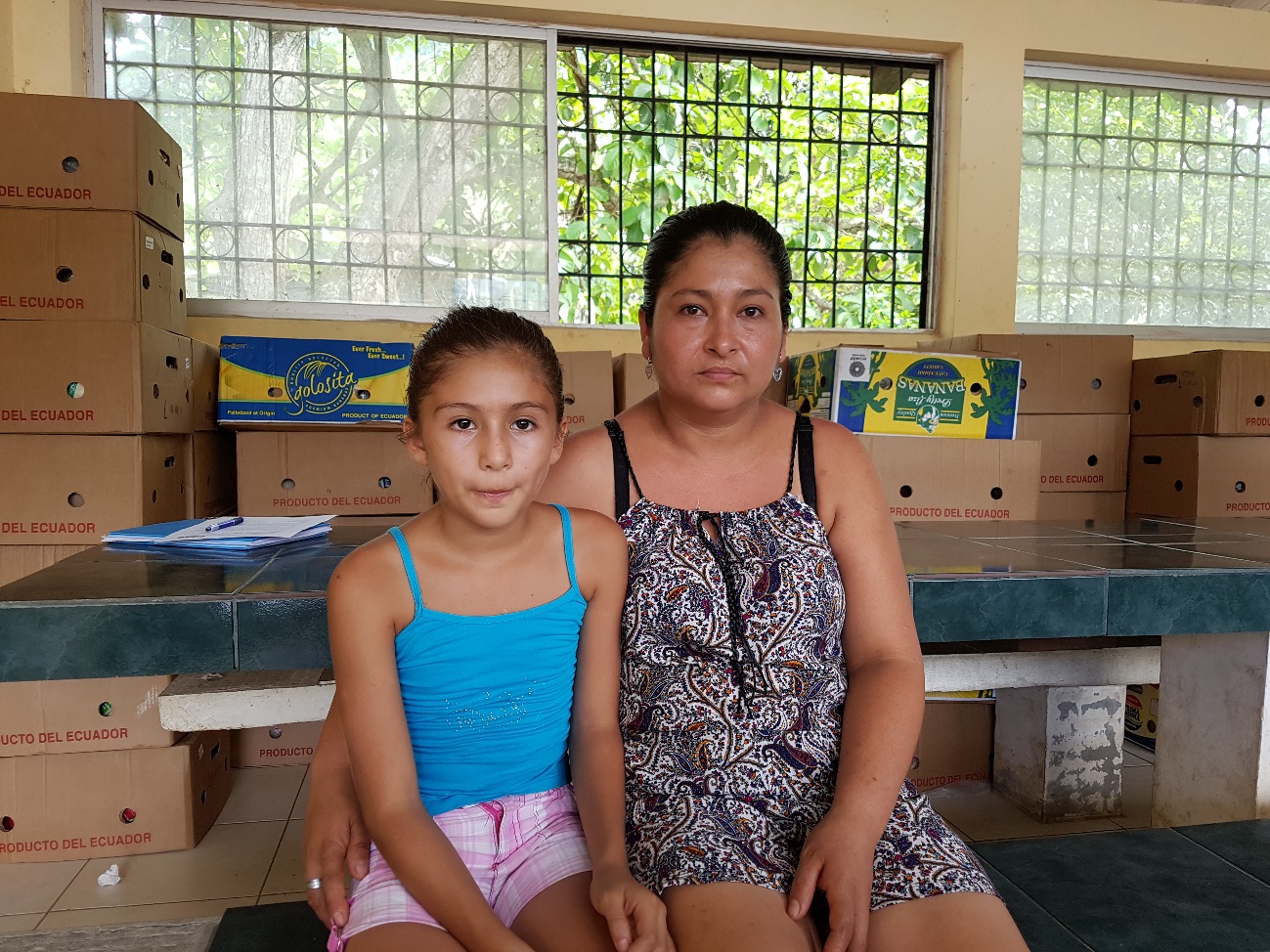El Nino has brought heavy rainfall to many countries of South America this year, with sometimes devastating effects. One of the first to be hit was Ecuador, and in March the Start Fund enabled a crisis response by Plan International. Elena Ruiz Labrador, the agency's national communication coordinator in Ecuador, reports on how families and children were helped
A year ago they endured a 7.8 magnitude earthquake that ended the lives of 671 people and left almost 400,000 without a roof over their heads, or basic resources. Then came another calamity for the inhabitants of province of Manabí in Ecuador: torrential rainfall that swept everything in its path, taking away many houses that had only been rebuilt or repaired.
Juliana, 11, tells how her family had to flee their community when rain and mud trapped them just by their home. "I'm still scared," she says. "They had to get us out by tying ropes to us because the water was up to our waists and it was impossible to walk, or find any of the paths that we usually use”.
Her house, located between two ravines, disappeared under the mud in a matter of seconds. Nothing was left and both she and her mother feel themselves lucky to have escaped, with only the clothes they were wearing.
In Ecuador, and as a consequence of the rainy season, four provinces were on orange alert in April due to the floods - Manabí, Guayas, Esmeraldas and Santa Elena. All were experiencing the severe effects of El Niño, the same meteorological phenomenon that has brought exceptional rains and serious flooding to much of South America since February.
In the space of a month, an estimated 8,800 homes in Ecuador were affected, leaving 400 people living in shelters and more than 9,500 families suffering directly from the consequences of the floods.
IMPROVISED SHELTERS
Some 20 families in the same situation as Juliana were housed temporarily in the Cruz Alta of Miguelillo school, located in the canton of Portoviejo. Although the families had a roof under which they could sleep, there were not enough sanitary facilities for so many people. There were no showers, people were crowded into the classrooms and at first they had nothing to eat.
"We were all drenched, dirty and crying, said Juliana. "We were desperate. We passed the night in the school and then they lent us a house." But the rains didn’t stop, she said, and "sometimes we were scared, because people said that another flood was coming."
Juliana's mother says that those first days were hard and frustrating. She had no sunscreen to protect her three daughters from burning their faces under the strong Manabí sun. "We didn’t have any repellent either and the mosquitoes were everywhere," she said. "There were children covered with bites and their mothers were afraid that dengue or another disease would break out at any time."
Even for the mothers themselves, it was difficult to meet their most basic needs. "Finding sanitary towels was a challenge in itself, and here they are not exactly cheap. Without any money to buy them, some women were resorting to rags or whatever they could find to hand."
HELP IN TIME
After these first few hours of chaos and uncertainty, Juliana remembers that it was Plan International "that brought us help and provided us with hygiene kits. My mom and my sisters use sanitary towels and we all use insect repellent to protect us from the irritating mosquito bites. Hand towels, toothbrushes and toothpaste enabled us to stay clean. They helped us with everything, really everything, because we could not get anything," she said.
For her part, her mother was grateful because "it would have been impossible for us to buy any of this. We left our homes without any money; we lost everything. These kits give us our dignity, at least. When you have nothing, receiving this is like a blessing."
Providing these kits was made possible thanks to the Start Fund, which awarded £129,000 enabling Plan International Ecuador to distribute hygiene kits, food, blankets and other supplies to the families affected by the floods. In addition, the organisation set up what it called “Emergency Intelligence Factories: Friendly Spaces for Children” - where children and adolescents could learn through games and art, including how to protect themselves in an emergency. They were also provided with psychological support to acquire the resilience they need, since it is they who suffer most from the effects of emergencies like this.

